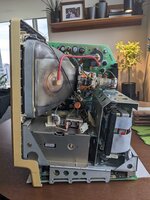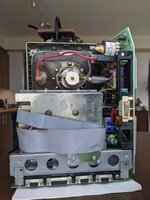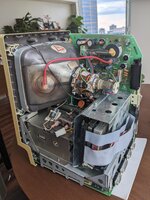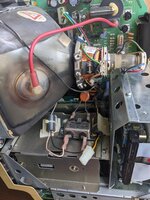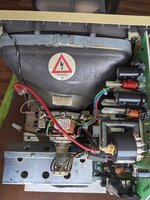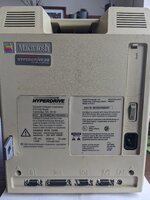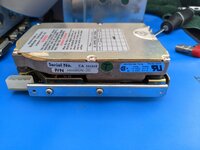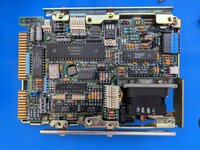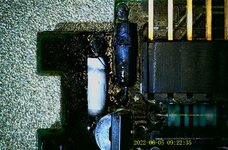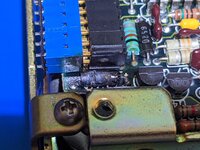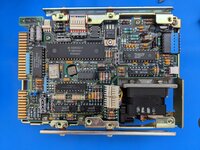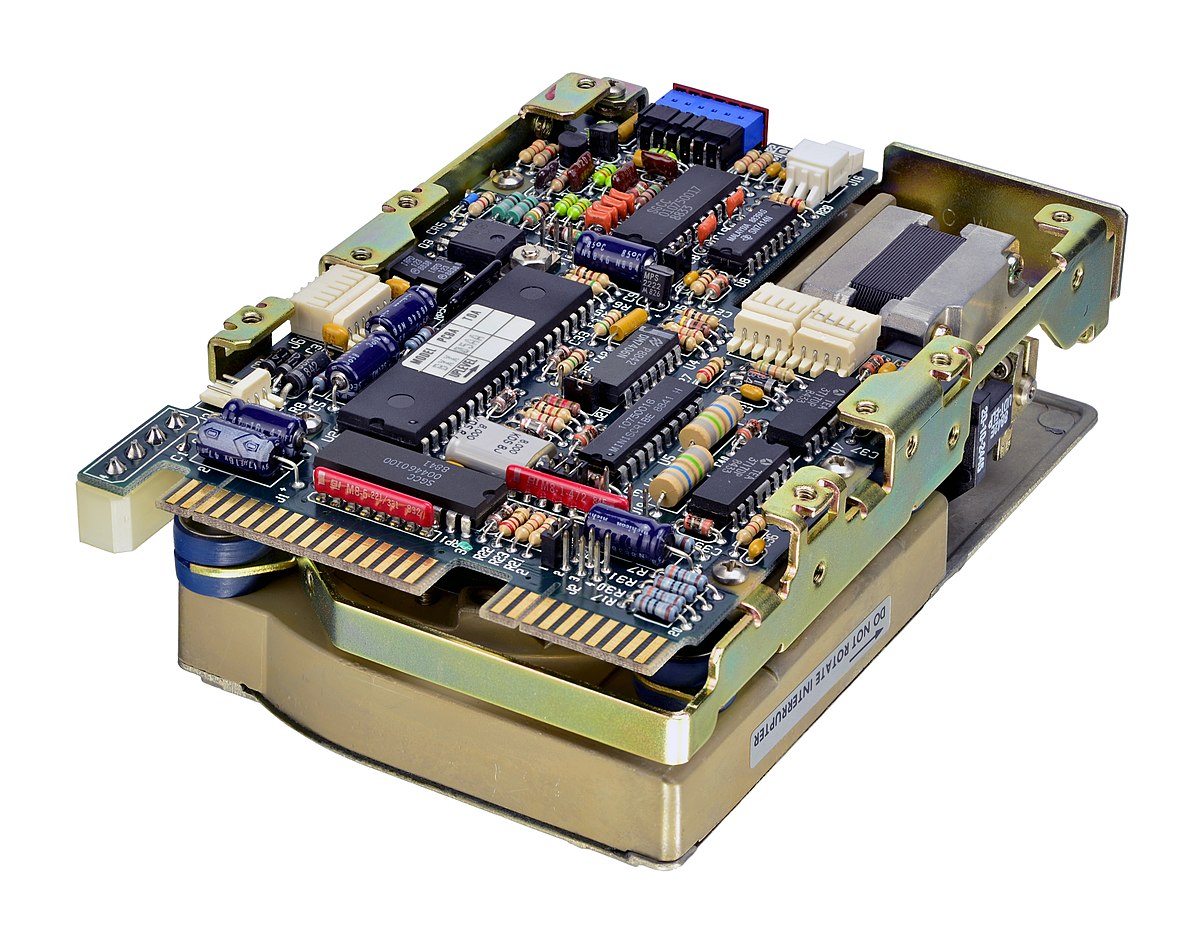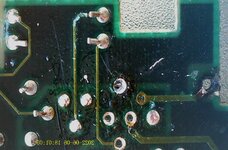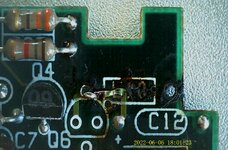Small update, a little disappointing but at least there is some progress on my sickly 8425SA.
The RetroHackShack video helped a lot on figuring out what was going on. Thanks a lot for the help!
I replaced the burned resistor at R45 (1Ω, 1%) but I had to chop up the Molex power connector to get at one of the solder joints for it – desoldering would have taken too long. It measured 26Ω out of circuit, which makes me suspect the "precision" part of "precision resistor" does not really exist anymore.
I then replaced the blown tantalum capacitor at C3 (22µF, unknown voltage so I just went with 25V) and the Molex connector. Resistance across +12V and GND went up by a lot at this point, which is a good sign.
After several weeks of daily watering with 3-in-1 oil, I was finally able to move the stepper motor shaft by hand. A little more oil got it moving fairly smoothly. I suspect I should have used something with a bit of edge to it, like Marvel Mystery Oil, but I had never used that directly on bearings and I was not in an especially big rush. A precision oiler helped get it into the right spot.
I decided to grab the crappiest ATX supply I had on the shelf and set it up to run the MiniScribe drive without any data cable attached. It spun up, sounded about the worst I've ever heard a hard drive, and then stopped after a few seconds. It clearly wasn't running at the full 3,600 rpm and made more noise than feeding a sheep to a garage door opener. Here, listen for yourself:
I gave it a few minutes to cool down and then reset the power, which made it spin up again and keep running for a little while longer, until I lost my nerve and shut it off:
This was still super loud, so I decamped to the garage, where it would be further away from sleeping toddlers. I gave it a half-hour test, with the hope that an Italian tune-up would help things. The noise persisted, but slowly got better with runtime (see? I
am right sometimes.) It became a lot better when I set the drive on its side, and now it sounds like a very loud regular ol' 80s hard drive, as opposed to a pile of crap.
During this extended test, no stepper motor action was heard or seen. I did notice some discoloured traces leading from the STMicro PBL3717A motor driver IC to what I assume is the drive pin for the stepper motor; no doubt caused by trying to force it when it was rusted shut. Not sure if that would also kill the driver IC, which is obviously NLA. It has zero ohm continuity between the driver pin and the stepper motor pin, so the trace is probably alright at room temperature. The ATX supply is perfectly happy driving this thing all day long, with no measured sag on the 12V rail.
Luckily for me, the MiniScribe has some self-diagnostics, although I haven't yet tried to set the jumper for "test mode" out of fear that it will accidentally wipe the drive. It does have a blink code that arises if the drive is unhappy on regular startup, though. It bloody well ought to; this thing has a Hitachi 6303 microcontroller on board and a full, socketed, DIP EPROM. I've got whole computers on the shelf that have less grunt than this hard drive does.
When I made an LED test harness to connect to the LED pins on the drive, I got on ON-FLASH-FLASH-FLASH error code, corresponding to 0b1000 (or $8) which the manual says:
Code 8 - Unable to uncover Track Zero sensor
This makes some sense if it can't move the stepper motor; however the same code emerges no matter where I move the stepper by hand before starting the drive. I'm guessing there's some ferrous crap lying right in front of the pickup for it, inside the stepper motor, and the sensor thinks that the stepper is permanently stuck at track zero. Still, you'd think it would at least try to move it before raising such a complaint. This makes me think that the stepper drive is also bad somehow, and maybe the badness is contagious.
Not sure where to go next, but I might see if I can figure out what the various pins for the stepper motor do. I also noticed these burned-looking resistors, but for some reason only a little bit of the end of the plastic got scorched:
TLDR, current candidates:
- Stepper motor driver IC is bad (there's two, so I could swap them, but I'm not clear on what the other one does)
- Motor is still too stuck for the drive circuitry to overpower it (could try to figure out how to drive it by shorting it)
- The suspicious R44, R46 precision resistors on the other side of the board (shown above) are also bad. These appear (from colours: purple-green-silver-gold) to be 0.75Ω 5% and they have a little bit of heat damage to the outside, but otherwise seem to be intact
- One of the transistors underneath the (socketed!) hybrid has clearly been running super hot and actually melted part of the hybrid's conformal coating. The hybrid gets super hot immediately as well, which is possibly intended, since it's stuck into free-flow air and the MiniScribe manual goes to specific lengths to tell you to make sure the airflow is unobstructed onto the board.
The struggle continues. I sure hope this drive has something cool on it after all this.

